18 Types of Hose Clamps to Securely Fasten That Hose
Author: Omar Alonso | Editor: Omar Alonso
Review & Research: Jen Worst & Chris Miller
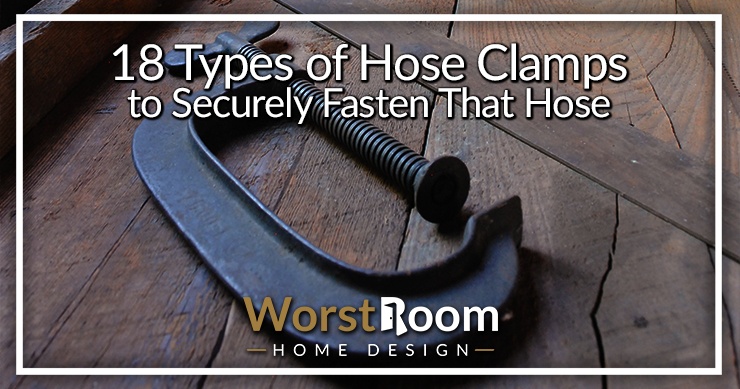
From construction and metalwork to woodwork to welding, all types of hose clamps are manna from heaven when you want to securely hold things in place.
These extremely handy, versatile objects are engineered to keep your project firmly secured while you work on it, whether it’s bathroom fittings or car engines and can be permanent or temporary.
Similarly, hose clamps secure hoses over a fitting by clamping the former down, so that no fluid from the hose escapes.
While the main purpose is the same, there are many different types of hose clamps that exist, each serving a different purpose, depending on whether you need to tighten, loosen or sustain light or heavy loads.
Accordingly, hose clamps come available in metal, plastic, different diameters, bands, separate housing and so on.
18 Types of Hose Clamps
If you’re wondering what hose clamp types are at your disposal, here’s a complete list. If you're interested in all types of clamps, we have that covered too.
Spring Clamps
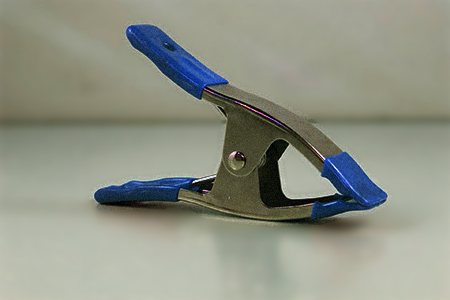
Also known as pinch clamps, spring clamps resemble clothespins, with their dual handles and a jaw kept together with a steel spring.
These clamps are super handy for small repair jobs, gluing things together or painting. The wires/bands provide unparalleled ease of use, assembly and top speed, within a limited range.
Spring clamps keep objects tightly in place using spring action. In fact, they even get their names from this spring action—of being able to spring back to their original shapes despite alterations.
The clamp is expanded to fit in the ideal position using pliers, post which its spring action holds the objects securely in place.
Spring clamps come in many sizes and shapes, making them ideal for coolant hoses in an engine. Spring clamps made using reinforced nylon are among the strongest, as this allows them to be sturdy, tight and durable.
Ear Clamps
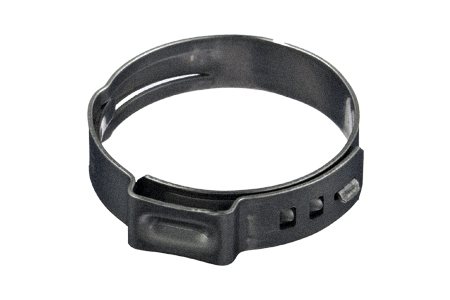
Named for the resemblance that their mechanism bears to the human ear, ear clamps are single or double clips with “ears'' on the clamp’s perimeter that allows tightening, generally synonymous with the brand Oetiker.
These ears are crimped, using a tool, to tighten the clamp; gripping the sides of the ears together also tightens the ring around the hose’s mouth and holds it in place.
Ear types of clamps for hoses are used to connect a pipe or fitting to a hose. They’re extremely useful for hose lines that don’t change pressure, but move around a lot. Once attached, make sure you know how to hide the exposed pipes and hoses so your decor stays in shape.
They’re also well suited to small diameters and instances where you need a simple, dedicated clamp.
Screw Clamps
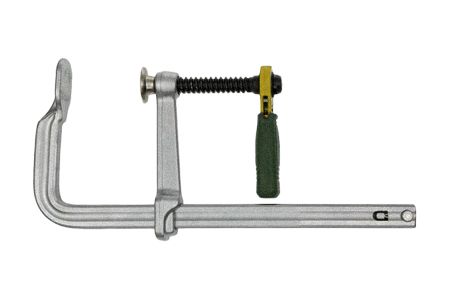
Screw clamps, also known as band clamps and worm gear types of hose clamps, keep hoses tightly fixed to fittings, to prevent them from sliding off or moving.
Turning the attached screw results in the band’s threads getting pulled, which in turn results in the band tightening around the hose.
Screw clamps are commonly used in the water industry. These screws get the name “worm gear clamps” from the protruding screw that inches its way up, in a motion similar to a worm’s, around the hose.
These clamps also feature smooth internal diameters that let you uniformly clamp surfaces to prevent any leak paths. This smoothness also reduces any risk of puncture and abrasion, to soft hoses, especially.
Wire Clamps
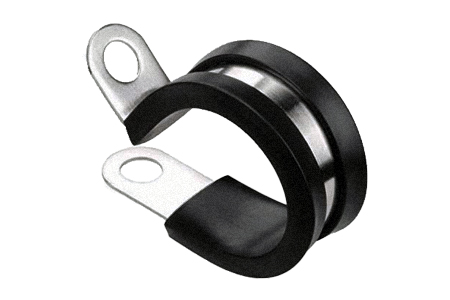
Wire clamps are ideal for any heavy-duty clamping that needs to be done. These feature eyelets on both ends of the clamp; you insert a screw through this eyelet and tighten as much as required.
These clamps are constructed using bent steel designed to wrap around in a predefined size. Wire clamps can be single or double-wire clamps, featuring screws that let them clamp thin and soft hoses.
Worm-Drive Hose Clamps
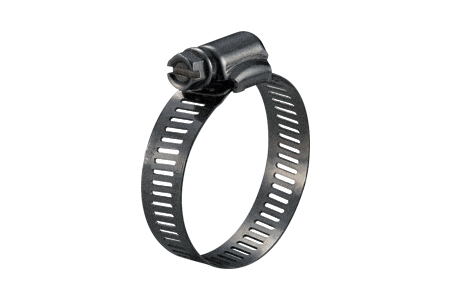
Worm-drive hose clamp types, also known as Jubilee clips (after the popular brand), go back a long way—they were first created in 1921 and have since gained popularity for their versatility, effectiveness and simplicity.
These hose clamp styles have a mechanism consisting of a series of slots and a screw—a worm-drive type mechanism. The threads engage the slots as the screw is tightened, leading to the band tightening the band onto the hose.
These clips are great for fixing solid fittings to flexible hoses—they’re designed to hold a pliable, soft hose onto rigid circular pipes or solid spigots, especially ones with a smaller diameter. These and many other hose clamps can maintain a pressure of 150 pounds per inch, which is plenty for nearly every application with rubber hoses.
They’re a kind of band clamp, which means that they consist of a strip or circular metal band that is combined with a worm gear to one end. These clips are also called worm-gear clips, worm-gear clamps or just hose clips.
There are many types of worm-drive clamps, such as ones with beveled edges (to prevent cutting into the hose or scratching) and incisions in the metal band. The ones with the screw-tightening mechanism are the most popular.
Embossed Hose Clamps
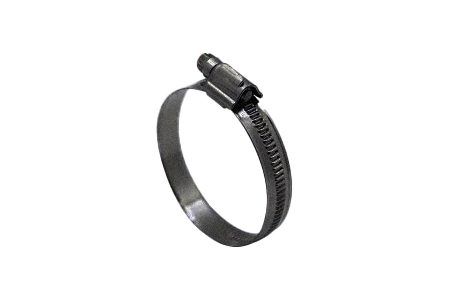
The embossed types of hose clamps are another version of the screw clamp (albeit an improved one), with the main focus being the prevention of the sharp edges of the clamp damaging the hose that it will clamp. The rounded, smoother edges accomplish this.
Solid Metal Band Clamps with Buckles
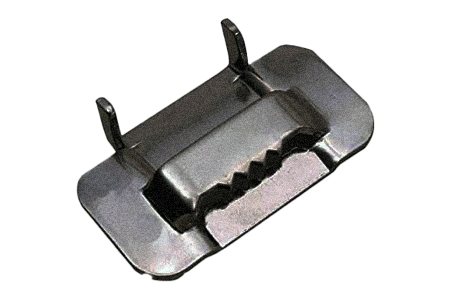
Generally made using stainless steel, these solid band clamps feature separate fixing buckles and are also known as Bandimex or Band-It.
These clamps are great for extremely tight clamping, with the band ensuring that a higher clamping force can be applied than is possible with a rotating screw.
These clamps can be used with any diameter and any type of hose, though it requires some manual skill and special tools. Attach your garden hose to whatever types of sprinkler heads you use, for example, so the back pressure doesn't blow the hose off eventually.
Adjustable Hose Clamps
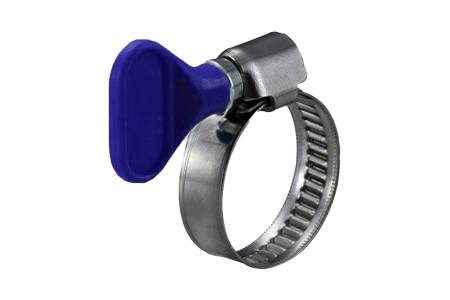
As the name says, adjustable hose clamps are standard clamps that can be used for the basic purpose of clamping. While this makes these clamps extremely versatile, it makes them unsuited to specific jobs.
Quick-Release Clamps
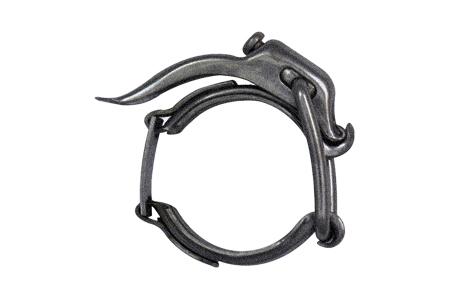
Quick-release clamps are clamps that can be easily and quickly removed. These hose clamp styles are great in situations where you need to constantly remove and reposition the clamp.
Spiral Clamps
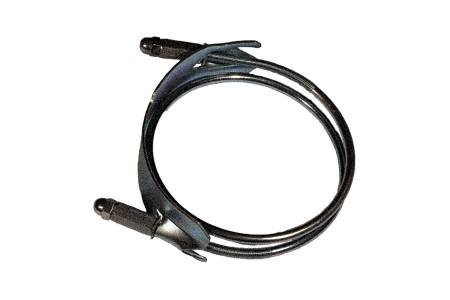
Also known as bridge clamps, these clamps go “off-axis”, adapting to piping with corrugation that’s pronounced.
These types of hose clamps guarantee greater uniformity when it comes to pressure and tightening around the hose.
Perforate Band Clamps with Separated Housings
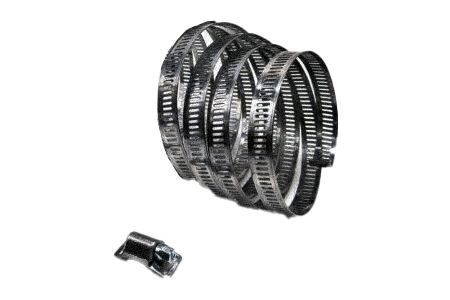
These types of clamps for hoses feature separate closures and continuous perforated band clamps, making them extremely versatile and perfectly suited to situations where you’re dealing with a variety of diameters for clamping.
The bands need to be cut to the right diameter size for the hose to be fixed, post which the take-up screw structure is added, firmly attached to the perforated band. This results in a perfectly-made-to-measure clamp in almost no time.
Perforated Band Clamps with Tilting Housing
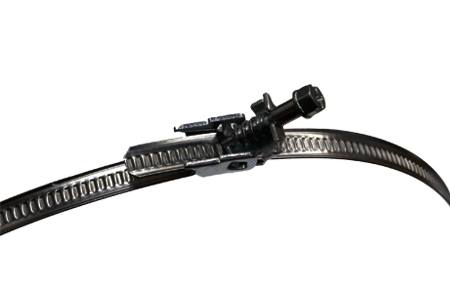
These hose clamp types feature perforated bands with tilting worm-drive housing. These are quite versatile and are extremely suitable for large diameters.
Marman Clamps
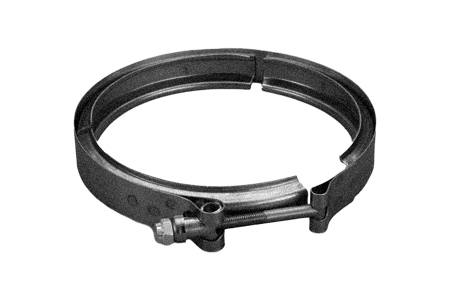
These are heavy-duty clamps that simply fix two cylindrical objects to be clamped end to end, using a ring clamp. Also known as ‘Marman rings’, these clamps have circular straps with a V-shaped groove internally.
Tension is applied to the strap, using nuts and a threaded bolt that are connected to the strap’s ends.
As the tension increases, the force that holds the ends of the cylinders becomes more substantial. Marman types of hose clamps are an alternative to bolted flange connections, being lighter and less laborious to connect.
You also get varieties with flat straps, commonly used where low pressure is carried by the systems or a cylindrical object needs to be held in position.
O-Clips
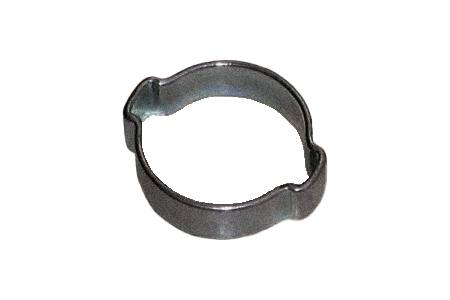
O-clips are the most economical hose clamps and work perfectly when you need to assemble simple hoses that carry only fluid and air.
These clamps are more flexible than other hose clamps are with fittings, in addition to being more tamper proof.
Heavy-Duty Hose Clamps
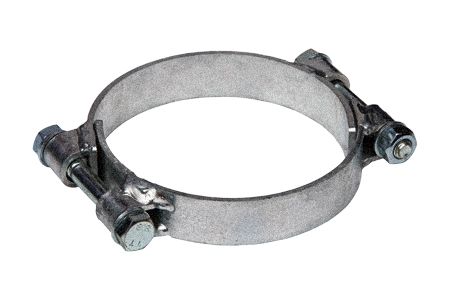
Also known as superclamps, these, as the name suggests, are excellent for heavy-duty clamping. These hoses are the strongest on the market and are great for difficult clamping.
T-Bolt Band Clamps
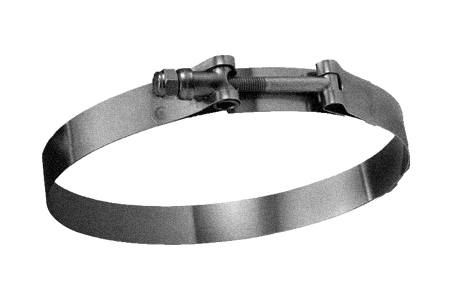
Simply known as T-bolt clamps, these hose clamp styles make use of a T-bolt tightened by a hex nut to seal hose connections that carry liquid and air.
Ratchet Clamps
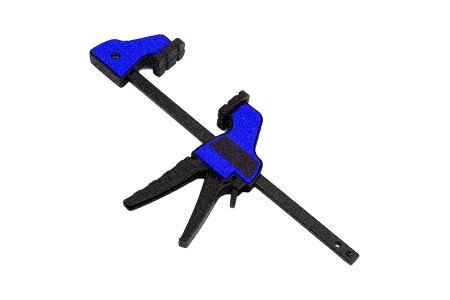
Also known as snap-close clamps, these are tightened and closed by a mechanism that snaps or is ratcheting. You can tighten these easily by hand.
V-Band Clamps
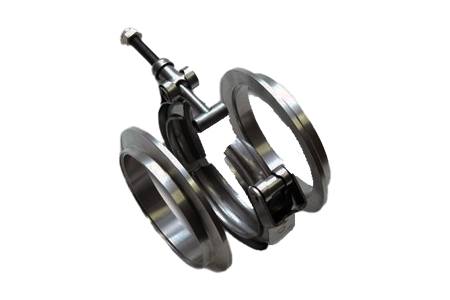
V-band clamps are circular clamps. These are tightened by a screw and have a V-shaped profile that lets you draw together two flanges.
Other Types of Hose Clamps
If you don’t want to use a clamp, you can use other methods of attaching tubing or hoses, such as:
- compression fittings
- swage fittings
- clamp fittings
- crimp banding
- push-fit fittings
- among others
Compression fittings are where soft metal ferrule or nylon is compressed onto the hose by tightening the fitting. In swage fittings, a stiff collar is compressed onto the hose, whereas in clamp fittings, two blocks are tightened onto the hose’s sides and are commonly on garden hoses.
Crimp banding is similar to worm-gear banding but uses a crimp instead of making use of a thread or screw.
Push-fit fittings are designed to let the force against the hose tighten the sleeve by inserting the hose into the compression sleeve.
Types of Hose Clamps for Every Task
As you can see, there are many different types of hose clamps out there, each serving a different purpose. The next time you need to use a hose clamp for a project, refer to our handy guide to find exactly the clamp you’re looking for.



